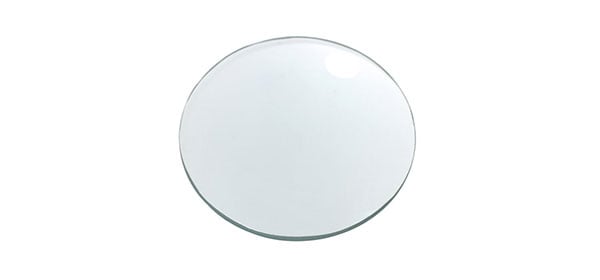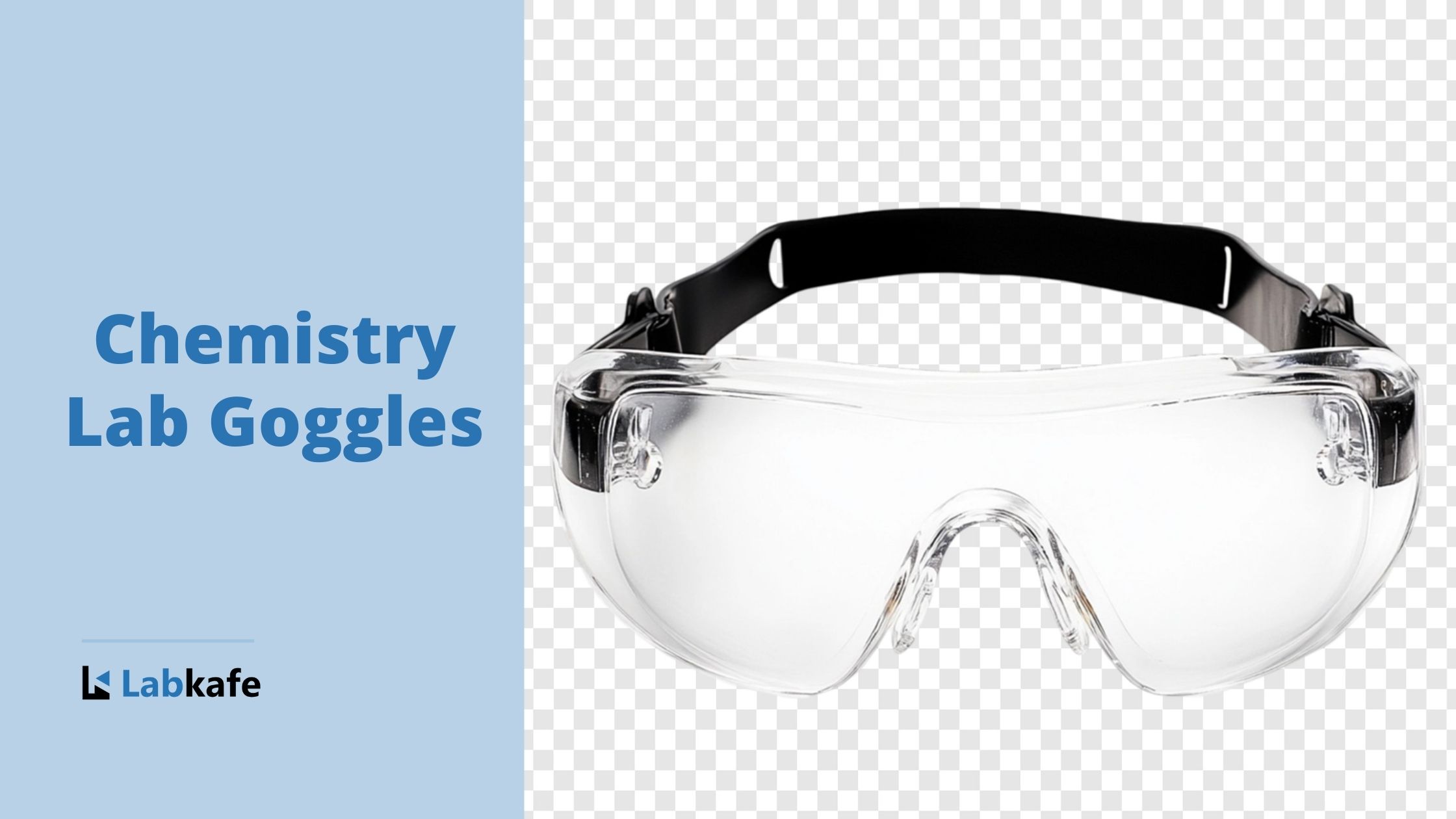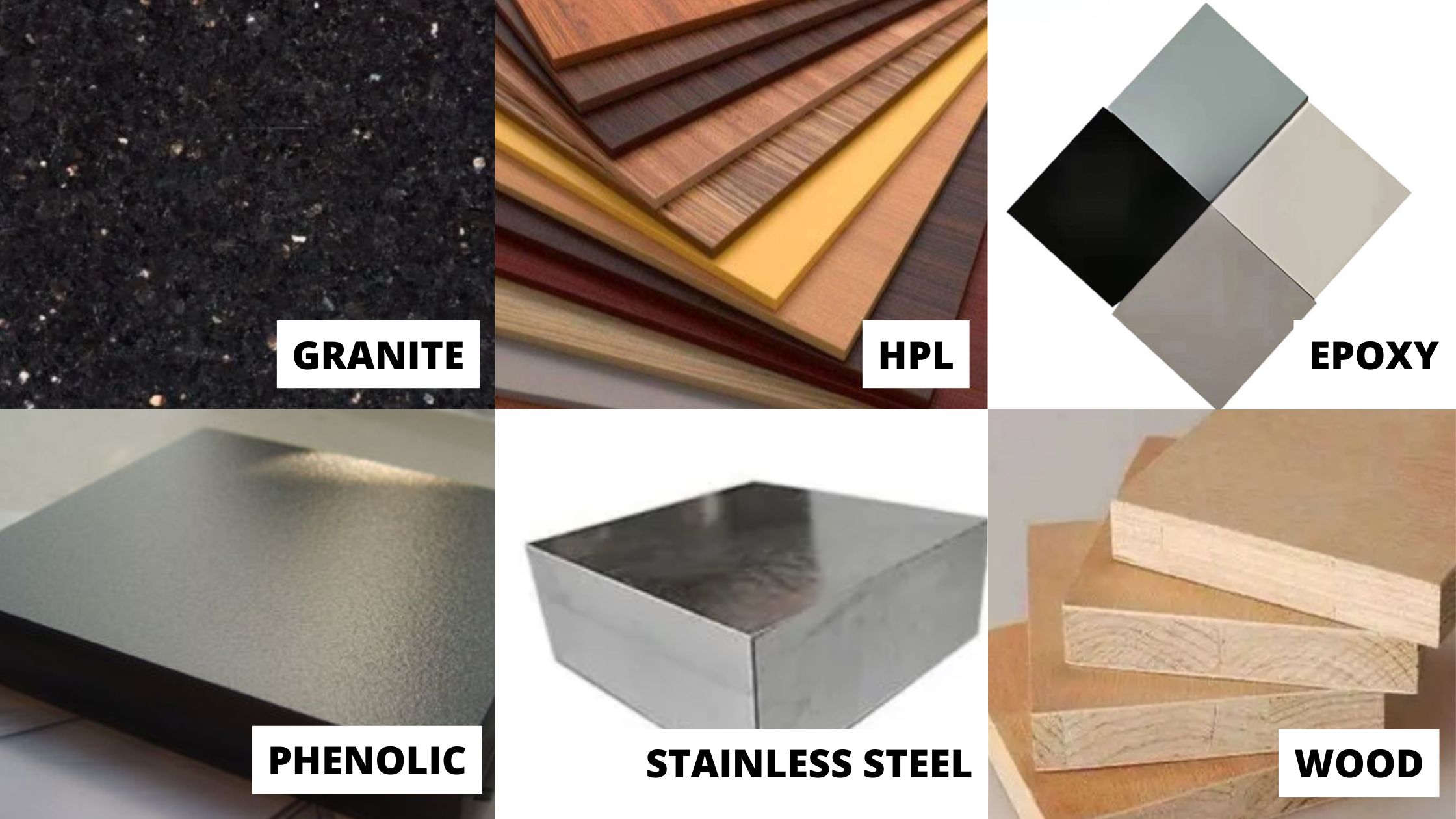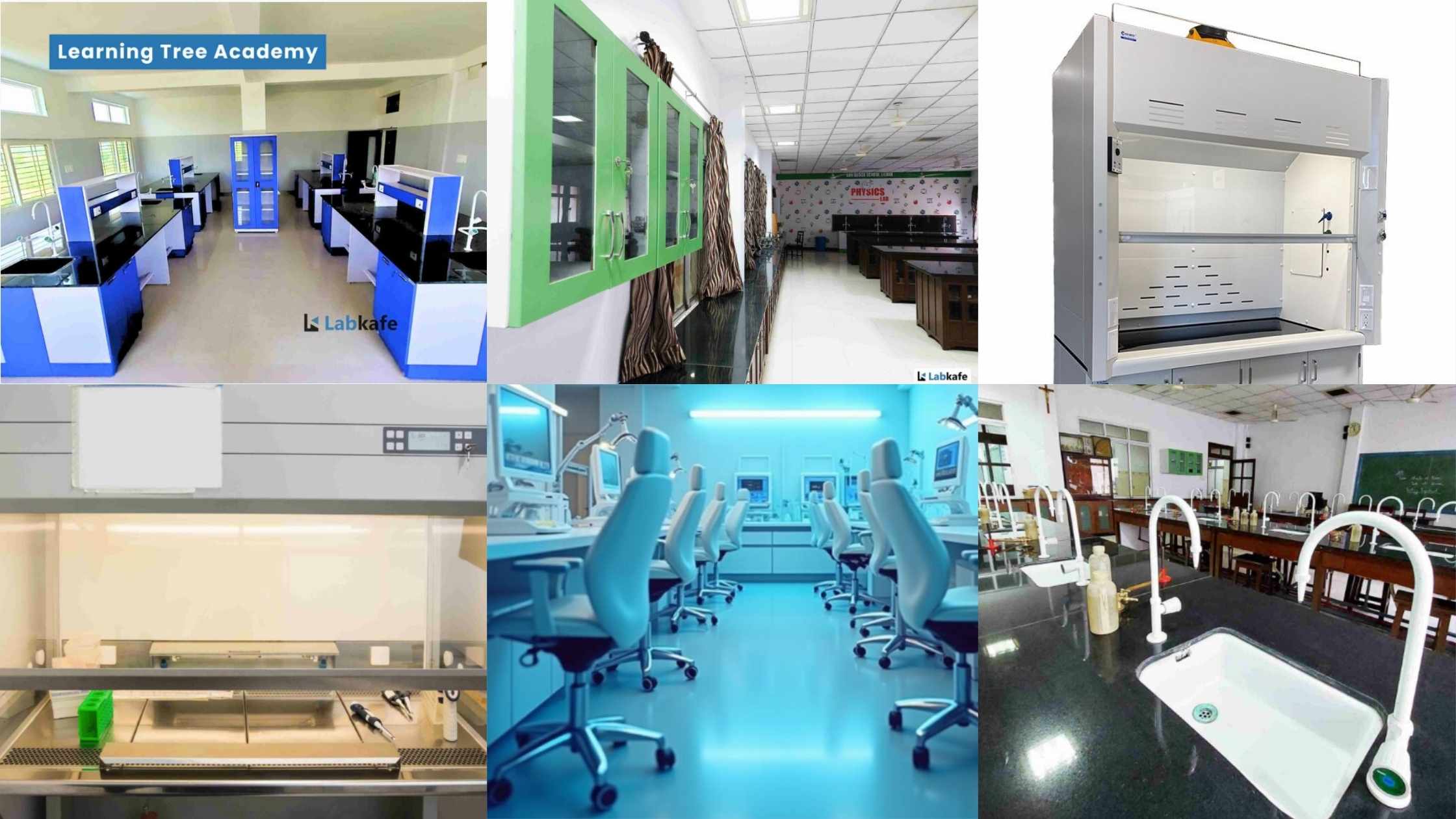In most Physics labs, you’ll encounter some basic Physics Laboratory Equipment. In this blog, you will find a picture and an explanation for how to use each of these equipment. But before that let’s understand “What is Physics?”
Physics is the natural science that studies matter, its motion and behavior through space and time and that studies the related entities of energy and force. Physics is one of the most fundamental scientific disciplines, and its main goal is to understand how the universe behaves. Its scope further trickles down to not only the behavior of objects under the action of given forces but also the nature and origin of gravitational, electromagnetic, and nuclear force fields.
Theory and experiment go hand in hand. An experiment that results in measurement of a phenomena can predict or confirm a theory. While a theory that predicts the outcome of an experiment is considered valid. And these list of equipment do just that by providing the measurement of phenomena in a controlled environment.
Here is the detail guide about Lab Equipment Package designed for 40 students as per school board curriculum and get school affiliation easily (CBSE/ICSE/Others).
Following are must-have list of physics laboratory equipment:
ELECTRICAL EQUIPMENT
RESISTOR

A resistor is an electrical component that provides electrical resistance in a circuit. It is used to reduce current flow, adjust signal levels, to divide voltages, bias active elements etc.
RHEOSTAT
A rheostat is a variable resistor which is used to control current. It can vary the resistance in a circuit by wiper (sliding contact) mechanism. You can read more about it here.
MULTIMETER

A multimeter is an electronic measuring instrument that combines several measurement functions in one unit. It can measure voltage, current, and resistance. Analog multimeter uses moving pointer to display readings while digital version displays it on a screen.
VOLTMETER

A voltmeter is an instrument used for measuring electrical potential difference between two points in an electric circuit. Analog voltmeters move a pointer across a scale in proportion to the voltage of the circuit while digital voltmeters give a numerical display of voltage by use of an analog to digital converter.
AMMETER

An ammeter is an instrument used to measure the current, either direct or alternating electric current, in a circuit. Electric currents are measured in amperes (A), hence the name. Analog ammeters move a pointer across a scale in proportion to the current of the circuit while digital ammeters give a numerical display of current by use of an analog to digital converter.
GALVANOMETER

The galvanometer is the device used for detecting the presence of small current and voltage or for measuring their magnitude. The galvanometer is mainly used in the bridges and potentiometer where they indicate the null deflection or zero current. It works as an actuator, by producing a rotary deflection (of a “pointer”), in response to electric current flowing through a coil in a constant magnetic field.
POTENTIOMETER

A potentiometer is a three-terminal resistor with a sliding or rotating contact that forms an adjustable voltage divider. If only two terminals are used, one end and the wiper, it acts as a variable resistor or rheostat.
BATTERY ELIMINATOR

A battery eliminator is a device powered by an electrical source other than a battery, which then converts the source to a suitable DC voltage that may be used by a second device designed to be powered by batteries.
DANIEL CELL

The Daniel cell is a type of electrochemical cell. It consists of a copper pot filled with cuprous sulfate solution, in which was immersed an unglazed earthenware container filled with sulfuric acid and a zinc electrode. Zinc sulfate may be substituted for the sulfuric acid.
LECLANCHE CELL
The Leclanché cell is a battery contained a conducting solution (electrolyte) of ammonium chloride, a cathode (positive terminal) of carbon, a depolarizer of manganese dioxide (oxidizer), and an anode (negative terminal) of zinc (reductant). The chemistry of this cell was later successfully adapted to manufacture a dry cell.
METER BRIDGE WITH PENCIL JOCKEY

Meter Bridge is an instrument that is used to find the unknown resistance of a coil or any other material. This bridge works under the principle of Wheatstone bridge. We know that the Wheatstone Bridge is used to measure the unknown resistance connected in a circuit. It consists of four resistors of which two resistors are known Resistors, one variable resistor and one unknown resistor along with a galvanometer. Meter bridge acts as the variable resistance.
It consists of a wire whose length is one meter and has uniform cross sectional area, stretched along a meter scale. The bridge has two metallic strips which is in reverted L shape on either side of the wire. These metallic strips act as holders for the wire. The wire is being clamped to the strips. These two metallic strips are made up of metals like copper. The bridge consists of another metallic strip which is placed between those two strips with a gap between them. So totally there are five leads on the bridge which are then connected to one known resistor, one unknown resistor and one galvanometer and thus forming Wheatstone bridge.
OHM’S LAW APPARATUS

Ohm’s Law apparatus is used to verify Ohm’s law i.e. potential difference (voltage) across an ideal conductor is proportional to the current through it. The constant of proportionality is called the “resistance”, R. and is termed as V=IR. The apparatus consists of one wire wound rheostat, one moving coil voltmeter and one moving coil ammeter, mounted on a bakelite plate in a wooden case. With four terminals, two for battery connection and two for resistance coil.
MAGNETIC EQUIPMENT
COMPASS

A compass is an instrument that shows directions. It has a needle, called a compass rose, which points in North-South direction. The “N” mark on the rose points northward. Compasses often display markings for angles in degrees in addition to the rose. North corresponds to 0°, and the angles increase clockwise i.e. east is 90°, south is 180°, and west is 270°.
MAGNET

A magnet is a material or object that produces a magnetic field that exerts a force, called magnetic force, which pulls on other ferromagnetic materials, such as iron, and attracts or repels other magnets. It has two poles called North and South pole.
OPTICAL EQUIPMENT
PRISM

A prism is a transparent optical element with flat, polished surfaces that refract light. At least two of the flat surfaces must have an angle between them. The traditional geometrical shape is that of a triangular prism with a triangular base and rectangular sides. Prisms can be made from any material that is transparent to the wavelengths for which they are designed. Typical materials include glass, plastic, and fluorite. It can be used to split light into its constituent spectral colours (the colours of the rainbow) where each colour has different wavelengths.
LENS

A lens is an optical device that focuses or disperses a light beam by means of refraction. A lens can focus light to form an image, unlike a prism, which refracts light without focusing. Lenses are made from materials such as glass or plastic, and are ground and polished or moulded to a desired shape.
Lenses are classified by the curvature of the two optical surfaces. A lens is biconvex (or double convex, or just convex) if both surfaces are convex. A lens with two concave surfaces is biconcave (or just concave). If one of the surfaces is flat, the lens is plano-convex or plano-concave depending on the curvature of the other surface. A lens with one convex and one concave side is convex-concave or meniscus. It is this type of lens that is most commonly used in corrective lenses.
MIRROR

A mirror is an object that reflects light in such a way that, for incident light in some range of wavelengths, the reflected light preserves many or most of the detailed physical characteristics of the original light, called specular reflection. The most familiar type of mirror is the plane mirror, which has a flat surface. Curved mirrors like concave or convex mirrors are used to produce magnified or diminished images or focus light.
GLASS SLAB

Glass Slab is used in optics related experiments involving refraction.
OPTICAL BENCH

The optical bench is a long steel pipe with a linear scale applied to it. It consists of holders for light sources, lenses and screens are placed on the apparatus so that image formation can be observed. An object is put on one side and corresponding image distance can be measured.
GRAVITY RELATED EQUIPMENT
PENDULUM

A pendulum is a weight suspended from a pivot so that it can swing freely. When a pendulum is displaced sideways from its resting, equilibrium position, it is subject to a restoring force due to gravity that will accelerate it back toward the equilibrium position. When released, the restoring force acting on the pendulum’s mass causes it to oscillate about the equilibrium position, swinging back and forth.
PARALLELOGRAM APPARATUS

Parallelogram apparatus is used in measuring forces acting on a single point. It consists of a black board of around 650x500mm with 2 aluminium pulleys clamped at the top. A spool of thread passes through these pulleys. Three hangers are connected to the spool and carry different slotted weights.
WAVES AND SOUND RELATED EQUIPMENT
TUNING FORK

A tuning fork is a two-pronged fork with the prongs (tines) formed from a U-shaped bar of elastic metal. On striking these tines against a surface, it resonates at a specific constant pitch. The pitch that a particular tuning fork generates depends on the length and mass of the two prongs. The back and forth vibration of the tines produce disturbances of surrounding air molecules. As a tine stretches outward from its usual position, it compresses surrounding air molecules into a small region of space; this creates a high pressure region next to the tine. As the tine then moves inward from its usual position, air surrounding the tine expands; this produces a low pressure region next to the tine. The high pressure regions are known as compressions and the low pressure regions are known as rarefactions. As the tines continue to vibrate, an alternating pattern of high and low pressure regions are created. These regions are transported through the surrounding air, carrying the sound signal from one location to another. To read furthur more click here.
VIBRATION GENERATOR

The Vibration Generator, as the name suggests, gives mechanical oscillations when fed by signals from an oscillator/A.F. amplifier. The frequency response encompasses the whole of the audio spectrum and beyond. Electrical input is made via two 4mm sockets and the mechanical output is provided by a shaft terminating in a pair of clamping nuts.
WAVE MOTION APPARATUS

Wave Motion Apparatus is used fordemonstrating longitudinal and transverse motion. It consists of a number of eccentric discs supporting a series of metal rods on revolving the handle, transverse waves are obtained. Longitudinal waves are obtained with bent rods running in metal guide on metal base.
RESONANCE APPARATUS

A resonance apparatus is used in locating resonance positions in air columns. These resonance positions help in calculating the speed of sound using the water level and the frequency of the tuning fork used.
SONOMETER

A Sonometer is a device for measuring the relationship between the frequency of the sound produced by a plucked string and the tension, length and mass per unit length of the string. For small amplitude vibration, the frequency is proportional to: the square root of the tension of the string, the reciprocal of the square root of the linear density of the string and the reciprocal of the length of the string. The tension is supplied by the weight of the masses hung on the ends of the wires after they pass over the pulleys.
HEAT AND THERMODYNAMICS RELATED EQUIPMENT
COPPER CALORIMETER

A calorimeter is used to measure the heat of chemical reactions or physical changes as well as heat capacity. It consists of a thermometer attached to a metal container full of water suspended above a combustion chamber. It is one of the measurement devices used in the study of thermodynamics, chemistry, and biochemistry.
To find the enthalpy change per mole of a substance A in a reaction between two substances A and B, the substances are separately added to a calorimeter and the initial and final temperatures are noted. Multiplying the temperature change by the mass and specific heat capacities of the substances gives a value for the energy given off or absorbed during the reaction. Dividing the energy change by how many moles of A were present gives its enthalpy change of reaction.
q = Cv (Tf − Ti)
Where q is the amount of heat according to the change in temperature measured in joules and Cv is the heat capacity of the calorimeter which is a value associated with each individual apparatus in units of energy per temperature (Joules/Kelvin).
STEAM BOILER
Steam boiler is a closed vessel into which water is heated until the water is converted into steam at required pressure. The boiler is essentially a closed vessel inside which water is stored. Fuel (generally coal) is bunt in a furnace and hot gasses are produced. These hot gasses come in contact with water vessel where the heat of these hot gases transfer to the water and consequently steam is produced in the boiler. Then this steam is piped to the turbine of thermal power plant. There are many different types of boiler utilized for different purposes like running a production unit, sanitizing some area, sterilizing equipment, to warm up the surroundings etc.
THERMOMETER

A thermometer is a device that measures temperature or change in temperature for a given body. It consists of a temperature sensor i.e. the bulb of a mercury-in-glass thermometer which expands with a change in temperature, and visible scale that converts this change into a numerical value.
DENSITY BALL

Density Ball is used to study the effect of temperature on the density of a liquid. A carefully counterweighted copper ball will float in cold water, but will sink in hot water, because of the subtle variation in water density around ball.
KINEMATICS RELATED EQUIPMENT
SEARLE’S APPARATUS (YOUNG MODULUS)
Searle’s apparatus is used to determine the Young’s modulus (Y) of the material of a wire. Two wires of the same material, length and area of cross section are suspended from a rigid support. It is then attached to two rectangular metal frames at their lower ends. One of the wires is called experimental wore and the other wire is called reference wire / compensating wire. The frame attached to the reference wire carries a constant weight to keep the wire stretched without any kinks. The frame attached to the experimental wire carries a hanger, over which slotted weights can be slipped as required. A spirit level is hinged with one end to the frame attached to the reference wire and rests horizontally on the tip of a micrometer screw which can be worked in the frame attached to the experimental wire along a vertical scale marked in millimetre.
SPRING BALANCE

Spring Balance is used to measure force using Hooke’s law. When force is applied to the spring it extends. Larger the force greater the extension will be. To establish this relationship, we add a series of masses, which increases the force on the spring, and we plot this force against the increase in spring extension on a graph. As we add more masses and increase the force applied to the spring balance we have more points to plot on the graph where all the points lie on a straight line, and this is Hooke’s law. Mathematically, Hooke’s law is expressed as the force on the spring (F) equals the extension of the spring (x) multiplied by a constant (k) known as the spring constant i.e. F = k * x
A detailed read can be done here.
SPRING CONSTANT APPARATUS

Spring Constant Apparatus is used to measure force by using Hook’s law. It consists of a Retort stand on which a spring is clamped. The other end of the spring has a hook on which variable slotted weight of 100gm, 200gm, 300gm, 400gm and 500gm are attached. A vertically placed ruler then measures the extension of the spring.
MEASURING EQUIPMENT
METER SCALE

Meter Scale is the most common measuring tool that we use in day-to-day activity. Often known as a ruler, it has equally spaced markings along its length used to measure distances along the straight lines.
VERNIER CALLIPER

Vernier Calliper is a measuring apparatus that can measure objects up to 15 cm in length. It is made up of a main scale and a vernier scale. It can measure in increments of 0.1 cm on the main scale. It has a pair of external jaws to measure external diameter, pair of internal jaws to measure internal diameter, and a long rod to measure depth.
SCREW GAUGE

A screw gauge is a measuring apparatus that can measure dimensions in the range of millimeters up to 5 cm. With a least count of 0.01mm, it can measure the dimension in increments of 0.01mm. Screw Gauges are widely used to measure the diameter of wires, screws, and bolts.
STOP CLOCK

A Stop Clock is a clock designed to measure the amount of time elapsed from a particular time when it is activated to the time when the piece is deactivated. It is used to measure time in experiments (like in pendulum-based experiments) where a brief period of time measurement is needed to do calculations.
SPHEROMETER

A spherometer is a precision instrument used to measure the radius of curvature of a spherical surface. It’s commonly used in fields such as optics, where it’s essential for determining the curvature of lenses and mirrors.
TRIPLE BEAM BALANCE

The triple beam balance is a measuring instrument that measures mass very precisely. It has a reading error of +/- 0.05 gram. The name refers to the three beams including the middle beam which is the largest size, the front beam which is the medium size, and the far beam which is the smallest size. The middle beam reads in 100-gram increments, the front beam can read from 0 to 10 grams, and the far beam reads in 10-gram increments. It can measure an object’s mass directly or find mass by difference for liquid.
DIGITAL BALANCE
Digital Balance is used to measure the weight of any given body accurately. In physics, it can be used in experiments where weight measurement is crucial like involving Archimedes Principle.
So, this was a brief overview of all the necessary items needed for your starting a biology laboratory from scratch.
At Labkafe, we provide laboratory furniture and equipment. In laboratory furniture, we first design the entire laboratory room keeping in mind the requirements. Also, we take care of the complete installation of laboratory furniture. In the lab equipment section, we have a wide range of glassware, chemicals, equipment, and other lab accessories. Most of them are available for order online from our website but some of them can be procured on demand. If you have any sort of laboratory requirements do mail us at [email protected] or WhatsApp 9147163562 and we’ll get in touch with you.












Leave a Reply